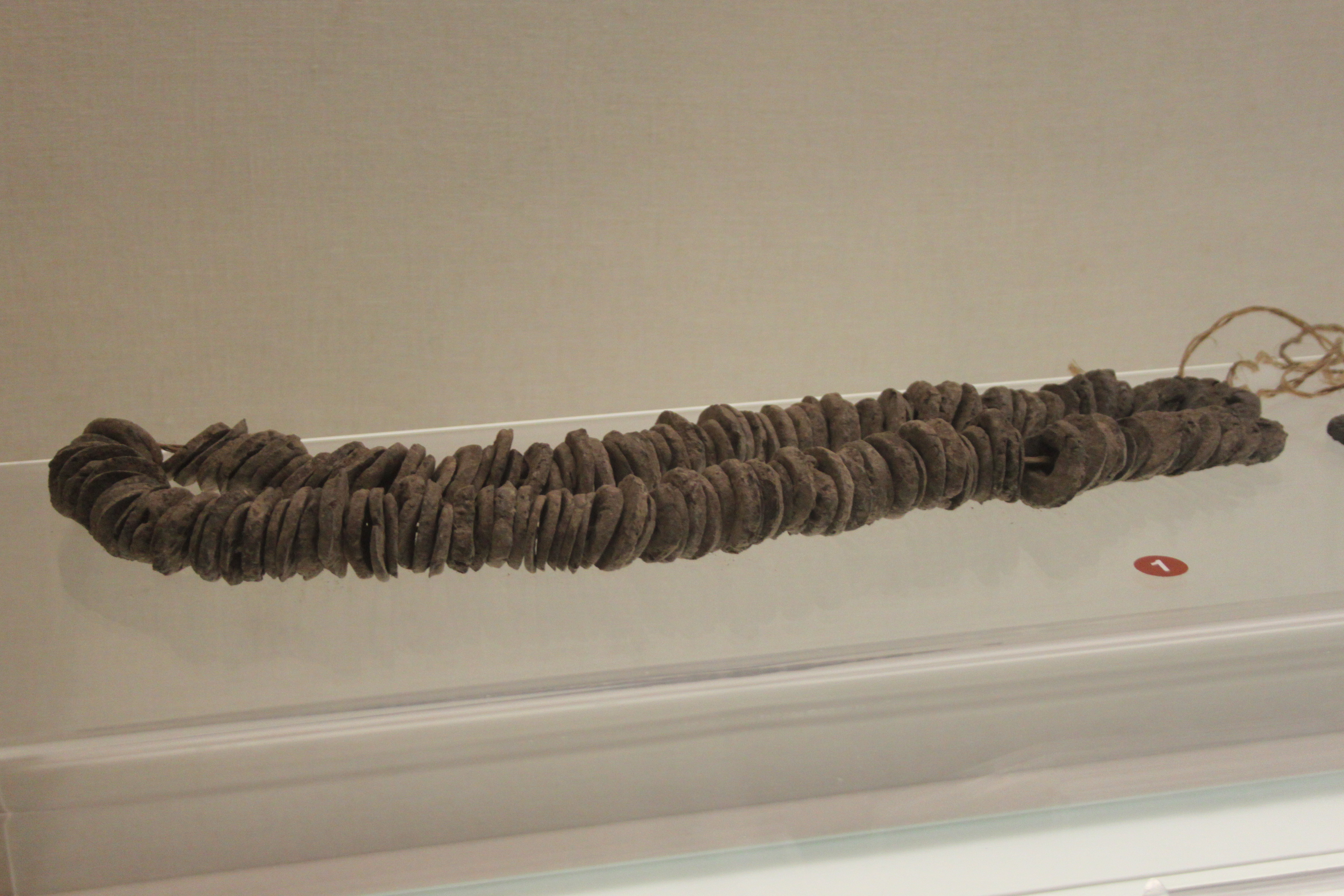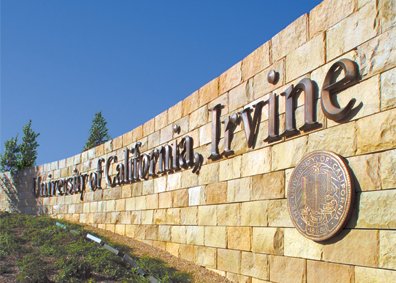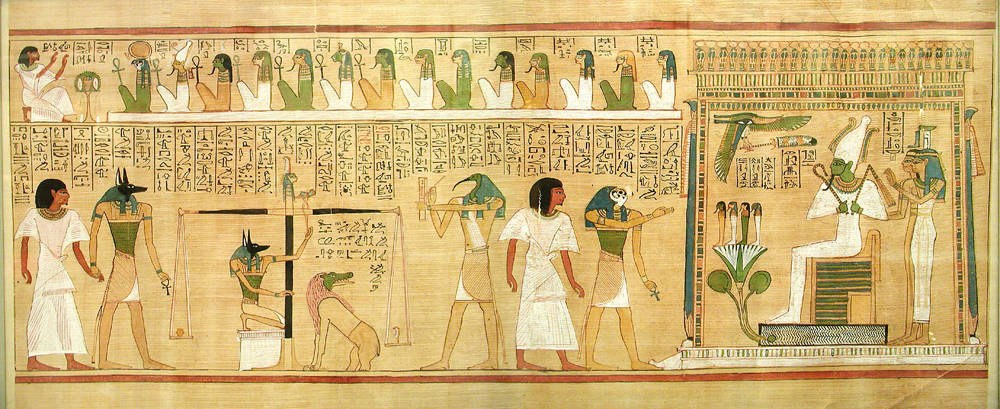|
Niqian
Chinese burial money () a.k.a. ''dark coins'' () are Chinese imitations of currency that are placed in the grave of a person that is to be buried. The practice dates to the Shang dynasty when cowrie shells were used, in the belief that the money would be used in the afterlife as a bribe to Yan Wang (also known as ''Yama'') for a more favourable spiritual destination. The practice changed to replica currency to deter grave robbers, and these coins and other imitation currencies were referred to as ''clay money'' (泥錢) or ''earthenware money'' (陶土幣). Chinese burial money has been discovered dating as far back as 1300 BCE and remained popular throughout Chinese history until the advent of joss paper and hell money during the late 19th century CE. History Burial money was modeled after the many different types of ancient Chinese coinages, and earlier forms of burial money tended to be actual money. Graves that were dated to the Shang dynasty period have been discover ... [...More Info...] [...Related Items...] OR: [Wikipedia] [Google] [Baidu] |
Cash (Chinese Coin)
The cash or qian was a type of coin of China and East Asia, used from the 4th century BC until the 20th century AD, characterised by their round outer shape and a square center hole (方穿, ''fāng chuān''). Originally cast during the Warring States period, these coins continued to be used for the entirety of Imperial China. The last Chinese cash coins were cast in the first year of the Republic of China. Generally most cash coins were made from copper or bronze alloys, with iron, lead, and zinc coins occasionally used less often throughout Chinese history. Rare silver and gold cash coins were also produced. During most of their production, cash coins were cast, but during the late Qing dynasty, machine-struck cash coins began to be made. As the cash coins produced over Chinese history were similar, thousand year old cash coins produced during the Northern Song dynasty continued to circulate as valid currency well into the early twentieth century. In the modern era, these coin ... [...More Info...] [...Related Items...] OR: [Wikipedia] [Google] [Baidu] |
Mawangdui Clay Replicas Of Coins
Mawangdui () is an archaeological site located in Changsha, China. The site consists of two saddle-shaped hills and contained the tombs of three people from the Changsha Kingdom during the western Han dynasty (206 BC – 9 AD): the Chancellor Li Cang, his wife Xin Zhui, and a male believed to have been their son. The site was excavated from 1972 to 1974. Most of the artifacts from Mawangdui are displayed at the Hunan Provincial Museum. It was called "King Ma's Mound" possibly because it was (erroneously) thought to be the tomb of Ma Yin (853–930), a ruler of the Chu (Ten Kingdoms), Chu kingdom during the Five Dynasties and Ten Kingdoms period. The original name might have been the similarly-sounding "saddle-shaped mound" (馬鞍堆 - mǎ ān duī). Tombs and their occupants The tombs were made of large Cupressus, cypress planks. The outside of the tombs were layered with white clay and charcoal. White clay layering originated with Chu burials, while charcoal layering was ... [...More Info...] [...Related Items...] OR: [Wikipedia] [Google] [Baidu] |
Knife Money
Knife money is the name of large, cast, bronze, knife-shaped commodity money produced by various governments and kingdoms in what is now China, approximately 2500 years ago. Knife money circulated in China between 600 and 200 B.C. during the Zhou dynasty."Encyclopedia of Money" Allen, Larry. Santa Barbara, California: ABC-CLIO INC., 1999 History There are several stories that attempt to explain how knife money was introduced but it is not certain if any or all are true. In one of the stories, a prince who was running low on money to pay his troops allowed them to use their knives as a form of currency to barter with villagers, and the medium became so popular that it became generally accepted. In another story, the same prince began accepting knives as payment for small fines in the place of the current legal ring money. Knife money may also have been brought in by sea traders from the Indian Ocean. Classification Knife Money is much the same shape as the actual knive ... [...More Info...] [...Related Items...] OR: [Wikipedia] [Google] [Baidu] |
HK Magazine
''HK Magazine'' was a free English-language alternative weekly published by HK Magazine Media Group in Hong Kong. Launched in 1991, it offered coverage of local affairs, social issues as well as entertainment listings. The 1000th issue was published in 2013, the same year that it was sold to the ''South China Morning Post'' (SCMP) group. The magazine printed its final issue on 7 October 2016. This was the third SCMP subsidiary to close since the takeover of the newspaper by the Alibaba Group. History ''HK Magazine'' was founded by best friends Greg Duncan, Stephen Freeman and Gretchen Worth. In 1989, considering Hong Kong a suitable place to start a magazine, they decided to establish an English-language publication. The first issue, called ''HK: the indispensable Hong Kong Guide'', was published in June 1991 by the local private company Asia City Publishing Limited. It had 24 pages and claimed a circulation of 15,000. It continued to publish on a monthly basis until November 19 ... [...More Info...] [...Related Items...] OR: [Wikipedia] [Google] [Baidu] |
Hades
Hades (; grc-gre, ᾍδης, Háidēs; ), in the ancient Greek religion and myth, is the god of the dead and the king of the underworld, with which his name became synonymous. Hades was the eldest son of Cronus and Rhea, although this also made him the last son to be regurgitated by his father. He and his brothers, Zeus and Poseidon, defeated their father's generation of gods, the Titans, and claimed rulership over the cosmos. Hades received the underworld, Zeus the sky, and Poseidon the sea, with the solid earth, long the province of Gaia, available to all three concurrently. In artistic depictions, Hades is typically portrayed holding a bident and wearing his helm with Cerberus, the three-headed guard dog of the underworld, standing to his side. The Etruscan god Aita and the Roman gods Dis Pater and Orcus were eventually taken as equivalent to Hades and merged into Pluto, a Latinisation of Plouton ( grc-gre, , Ploútōn), itself a euphemistic title often given to Had ... [...More Info...] [...Related Items...] OR: [Wikipedia] [Google] [Baidu] |
Charon's Obol
Charon's obol is an allusive term for the coin placed in or on the mouth of a dead person before burial. Greek and Latin literary sources specify the coin as an obol, and explain it as a payment or bribe for Charon, the ferryman who conveyed souls across the river that divided the world of the living from the world of the dead. Archaeological examples of these coins, of various denominations in practice, have been called "the most famous grave goods from antiquity." The custom is primarily associated with the ancient Greeks and Romans, though it is also found in the ancient Near East. In Western Europe, a similar usage of coins in burials occurs in regions inhabited by Celts of the Gallo-Roman, Hispano-Roman and Romano-British cultures, and among the Germanic peoples of late antiquity and the early Christian era, with sporadic examples into the early 20th century. Although archaeology shows that the myth reflects an actual custom, the placement of coins with the dead wa ... [...More Info...] [...Related Items...] OR: [Wikipedia] [Google] [Baidu] |
Ancient Rome
In modern historiography, ancient Rome refers to Roman civilisation from the founding of the city of Rome in the 8th century BC to the collapse of the Western Roman Empire in the 5th century AD. It encompasses the Roman Kingdom (753–509 BC), Roman Republic (509–27 BC) and Roman Empire (27 BC–476 AD) until the fall of the western empire. Ancient Rome began as an Italic settlement, traditionally dated to 753 BC, beside the River Tiber in the Italian Peninsula. The settlement grew into the city and polity of Rome, and came to control its neighbours through a combination of treaties and military strength. It eventually dominated the Italian Peninsula, assimilated the Greek culture of southern Italy ( Magna Grecia) and the Etruscan culture and acquired an Empire that took in much of Europe and the lands and peoples surrounding the Mediterranean Sea. It was among the largest empires in the ancient world, with an estimated 50 to 90 million inhabitants, roughly 20% of t ... [...More Info...] [...Related Items...] OR: [Wikipedia] [Google] [Baidu] |
Ancient Greek
Ancient Greek includes the forms of the Greek language used in ancient Greece and the ancient world from around 1500 BC to 300 BC. It is often roughly divided into the following periods: Mycenaean Greek (), Dark Ages (), the Archaic period (), and the Classical period (). Ancient Greek was the language of Homer and of fifth-century Athenian historians, playwrights, and philosophers. It has contributed many words to English vocabulary and has been a standard subject of study in educational institutions of the Western world since the Renaissance. This article primarily contains information about the Epic and Classical periods of the language. From the Hellenistic period (), Ancient Greek was followed by Koine Greek, which is regarded as a separate historical stage, although its earliest form closely resembles Attic Greek and its latest form approaches Medieval Greek. There were several regional dialects of Ancient Greek, of which Attic Greek developed into Koine. Dia ... [...More Info...] [...Related Items...] OR: [Wikipedia] [Google] [Baidu] |
University Of California, Irvine
The University of California, Irvine (UCI or UC Irvine) is a public land-grant research university in Irvine, California. One of the ten campuses of the University of California system, UCI offers 87 undergraduate degrees and 129 graduate and professional degrees, and roughly 30,000 undergraduates and 6,000 graduate students are enrolled at UCI as of Fall 2019. The university is classified among " R1: Doctoral Universities – Very high research activity", and had $436.6 million in research and development expenditures in 2018. UCI became a member of the Association of American Universities in 1996. The university was rated as one of the "Public Ivies” in 1985 and 2001 surveys comparing publicly funded universities the authors claimed provide an education comparable to the Ivy League. The university also administers the UC Irvine Medical Center, a large teaching hospital in Orange, and its affiliated health sciences system; the University of California, Irvine, Arboretum; and ... [...More Info...] [...Related Items...] OR: [Wikipedia] [Google] [Baidu] |
Spring And Autumn Period
The Spring and Autumn period was a period in Chinese history from approximately 770 to 476 BC (or according to some authorities until 403 BC) which corresponds roughly to the first half of the Eastern Zhou period. The period's name derives from the ''Spring and Autumn Annals'', a chronicle of the state of Lu between 722 and 479 BCE, which tradition associates with Confucius (551–479 BCE). During this period, the Zhou royal authority over the various feudal states eroded as more and more dukes and marquesses obtained ''de facto'' regional autonomy, defying the king's court in Luoyi and waging wars amongst themselves. The gradual Partition of Jin, one of the most powerful states, marked the end of the Spring and Autumn period and the beginning of the Warring States period. Background In 771 BCE, a Quanrong invasion in coalition with the states of Zeng and Shen — the latter polity being the fief of the grandfather of the disinherited crown prince Yijiu — destroyed the ... [...More Info...] [...Related Items...] OR: [Wikipedia] [Google] [Baidu] |
Albany, New York
Albany ( ) is the capital of the U.S. state of New York, also the seat and largest city of Albany County. Albany is on the west bank of the Hudson River, about south of its confluence with the Mohawk River, and about north of New York City. The city is known for its architecture, commerce, culture, institutions of higher education, and rich history. It is the economic and cultural core of the Capital District of the State of New York, which comprises the Albany–Schenectady–Troy Metropolitan Statistical Area, including the nearby cities and suburbs of Troy, Schenectady, and Saratoga Springs. With an estimated population of 1.1 million in 2013, the Capital District is the third most populous metropolitan region in the state. As of 2020, Albany's population was 99,224. The Hudson River area was originally inhabited by Algonquian-speaking Mohican (Mahican), who called it ''Pempotowwuthut-Muhhcanneuw''. The area was settled by Dutch colonists who, in 1614, built Fort ... [...More Info...] [...Related Items...] OR: [Wikipedia] [Google] [Baidu] |
Afterlife
The afterlife (also referred to as life after death) is a purported existence in which the essential part of an individual's identity or their stream of consciousness continues to live after the death of their physical body. The surviving essential aspect varies between belief systems; it may be some partial element, or the entire soul or spirit of an individual, which carries with it and may confer personal identity or, on the contrary, nirvana. Belief in an afterlife is in contrast to the belief in oblivion after death. In some views, this continued existence takes place in a spiritual realm, while in others, the individual may be reborn into this world and begin the life cycle over again, likely with no memory of what they have done in the past. In this latter view, such rebirths and deaths may take place over and over again continuously until the individual gains entry to a spiritual realm or otherworld. Major views on the afterlife derive from religion, esotericism an ... [...More Info...] [...Related Items...] OR: [Wikipedia] [Google] [Baidu] |








